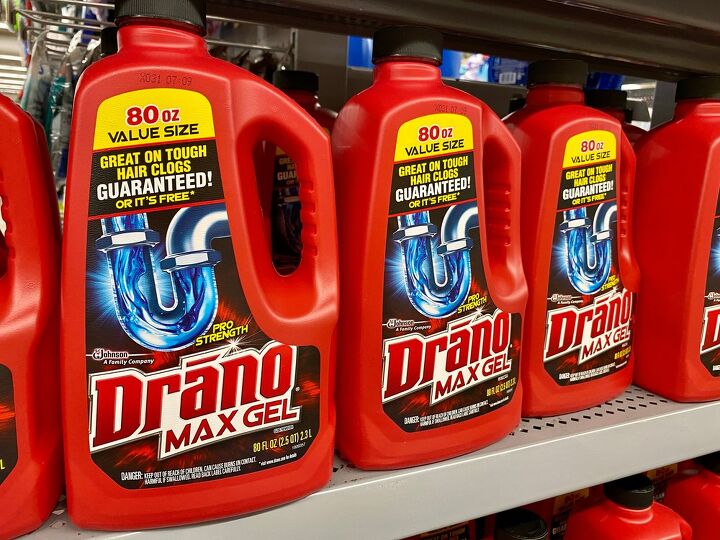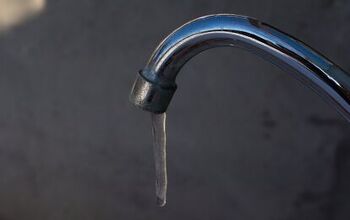How Long Does Drano Take To Work?

Anyone who’s owned or rented a house for any period of time knows that clogged drain lines are inevitable. Luckily, a common and handy solution is readily available to get rid of those pesky clogs. Drano is one of the top resources to eliminate clogs in sinks, tubs, and many other drain lines.
Drano can unplug your drain issue in anywhere from 15 minutes to one hour. The speed of its effectiveness depends on the severity of the clog, the type of Drano you use, and how much you use. Make sure to follow the instructions on your Drano container and follow them to a T.
While Drano is highly effective at getting rid of clogs, there are a few things you should know before using it. We’ll look at the ins and outs of Drano and what its best uses are. We’ll also look at what to do in each unique circumstance and where you should avoid using Drano.
Do You Need to Hire a Plumber?
Get free, zero-commitment quotes from pro contractors near you.

How Long Does Drano Take to Work?
If you have a clog in one of your drain lines, Drano can get rid of it in anywhere from 15-60 minutes or even less in some cases. The time it takes for Drano to work largely depends on what type of Drano you’re using. Here are the different kinds of Drano and their expected working time.
- Drano Max Gel Clog Remover removes clogs in 15-30 minutes. Its best use is when there’s standing water.
- Drano Kitchen Granules Clog Remover also removes clogs in 15-30 minutes. As the name implies, this type of Drano is best when used in the kitchen.
- Drano Dual Force Foamer Clog Remover takes the longest to remove clogs and takes up to 60 minutes. The best place to use this is on a clogged disposal system.
- Drano Liquid Drain Cleaner takes 15-30 minutes to get the job done. You can use this type of Drano anywhere except for in standing water.
- Drano Snake Plus Tool + Gel System takes around 30 minutes, not including the time it takes to use the snake tool. This type of Drano is best used for severe clogs where Drano might not be sufficient.
- Drano Hair Buster Gel is potentially the fastest option and can work in as little as 7-30 minutes. As the name indicates, its best use is for getting rid of hair clogs.
- Drano Kitchen Gel has a standard Drano time of 15-30 minutes to remove clogs.
The type of Drano you use heavily depends on where you’re using it and what you think the clog is. Most Drano products will get rid of hair, but some are better suited for the job than others.
Explainer Video: How To Unclog A Drain With Drano Gel Commercial Strength
How Does Drano Work?
Drano consists of sodium hydroxide, sodium metasilicate, and bleach. These three elements form extreme heat when they’re poured down a clogged drain and effectively eat or melt away the clog. You should always wear gloves when you’re using Drano as it can burn your hands if it makes contact with them. Drano is designed so that it doesn’t break down the container that it’s sold in.
How to Use Drano the Right Way
Using Drano is quick and easy as long as you follow the instructions on your Drano container. However, if the directions aren’t clear or have been removed, here are three simple steps for using Drano.
- Check the drain that you plan to pour Drano into and remove any surface particles you can reach. For severe hair clogs, I recommend using the Drano Snake Plus Tool + Gel System so that you can loosen up or remove excess hair in the drain.
- If you don’t want to use Drano right away, you can opt to use a plunger and see if that will free up the clog.
- If nothing seems to be working, it’s time to open your bottle of Drano and pour it down the clogged sink or tub drain.
- Pour the recommended amount of Drano down the drain based on the type of clog you have. Sixteen ounces for a slow drain and 32 ounces for an extremely slow drain.
- Wait for 15 to 30 minutes based on the severity of the clog.
- Run hot water down the drain to flush out the Drano.
Can Drano Sit Overnight?
Drano is a very stable product that doesn’t lose its potency, and that also won’t damage your pipes if it’s used correctly. For that reason, it’s ok to leave Drano sitting in your sink or tub overnight for extremely stubborn clogs. However, make sure that you follow your product instructions precisely. Otherwise, you risk damaging your pipes.
Will Drano Work With Standing Water?
Not all Drano products work well with standing water, so ensure you know which products do before purchasing them. Drano Kitchen Gel and Drano Max Gel Clog Remover are two of the best options for standing water. Pour your Drano product of choice directly through the water and into the drain that’s clogged. These products will go through the water and attack the drain without getting held up by water.
Related Questions
Can I use Drano in the toilet?
Drano should never be used to unplug a toilet or be poured or flushed down the toilet. Drano uses an oxidizing chemical reaction to break down and dissolve things that are causing clogs. The chemical reaction can crack or break your porcelain toilet, which will lead to a whole other set of problems. You should use a plunger, a snake line, or call a plumber for clogged toilets.
Does Drano work on hair?
Drano will entirely and effectively dissolve hair that’s clogging a sink or tub.
How Long Should You Run Water After Using Drano?
Running water after you use Drano is simply to flush the system, and you should do it for several minutes. Make sure to use hot water and to let it run freely for the allotted time.
Do You Need to Hire a Plumber?
Get free, zero-commitment quotes from pro contractors near you.

Final Thoughts
Drano truly is an excellent product for getting rid of pesky clogs in your drain pipes. You should always know what type of clog you have and where it is when choosing your Drano product. As long as you make the right choice, you can expect results in under an hour and as quickly as 10 to 30 minutes in most cases.

Before I started writing, I worked for 6 plus years in the plumbing, electrical, and HVAC business. I was primarily an HVAC installer but also worked as a plumber and electrician. Now I'm a copywriter, focusing on home improvement content and guides.
More by Jalin Coblentz



























